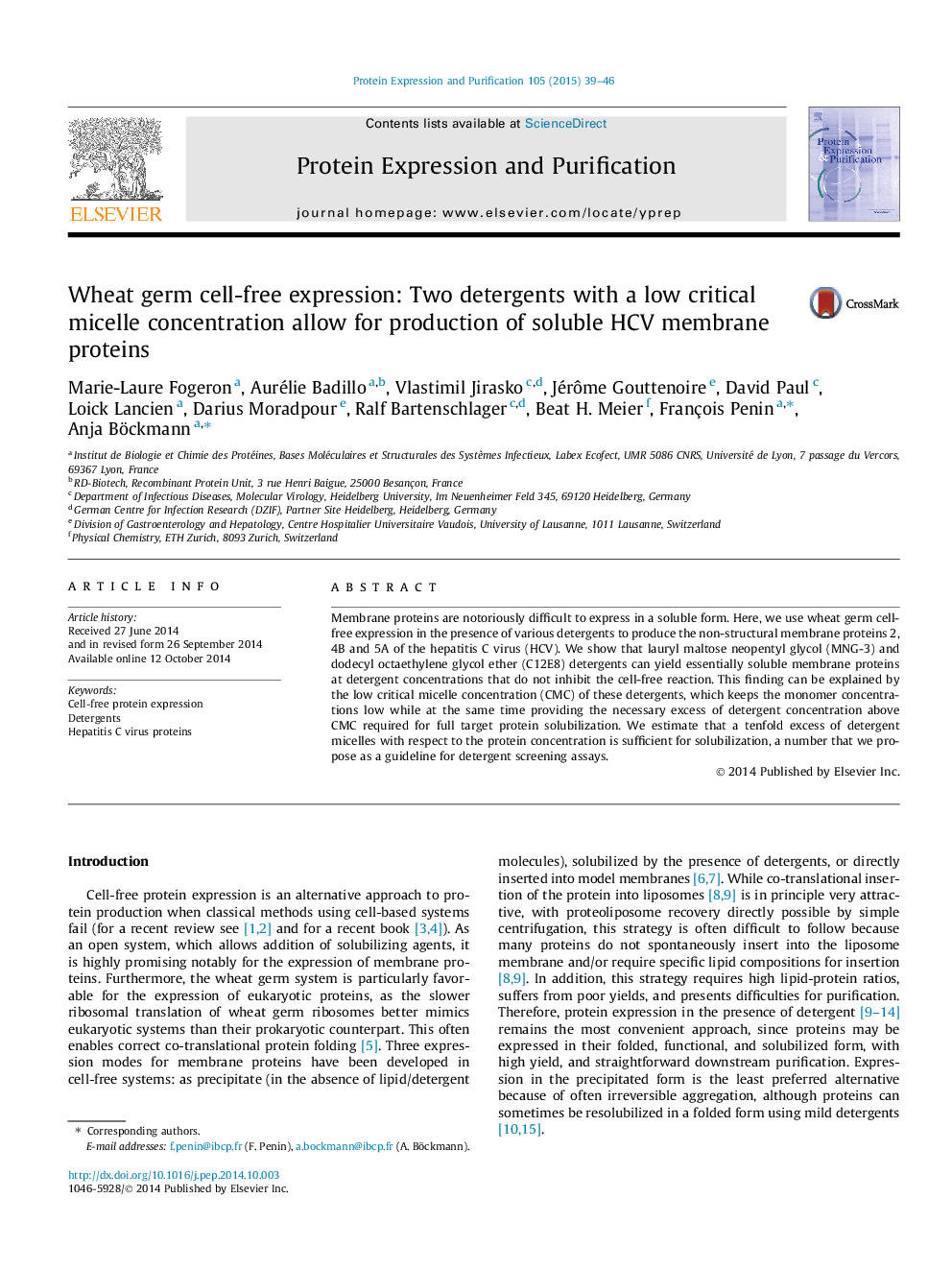| Article ID | Journal | Published Year | Pages | File Type |
|---|---|---|---|---|
| 2020398 | Protein Expression and Purification | 2015 | 8 Pages |
Abstract
Membrane proteins are notoriously difficult to express in a soluble form. Here, we use wheat germ cell-free expression in the presence of various detergents to produce the non-structural membrane proteins 2, 4B and 5A of the hepatitis C virus (HCV). We show that lauryl maltose neopentyl glycol (MNG-3) and dodecyl octaethylene glycol ether (C12E8) detergents can yield essentially soluble membrane proteins at detergent concentrations that do not inhibit the cell-free reaction. This finding can be explained by the low critical micelle concentration (CMC) of these detergents, which keeps the monomer concentrations low while at the same time providing the necessary excess of detergent concentration above CMC required for full target protein solubilization. We estimate that a tenfold excess of detergent micelles with respect to the protein concentration is sufficient for solubilization, a number that we propose as a guideline for detergent screening assays.
Related Topics
Life Sciences
Biochemistry, Genetics and Molecular Biology
Biochemistry
Authors
Marie-Laure Fogeron, Aurélie Badillo, Vlastimil Jirasko, Jérôme Gouttenoire, David Paul, Loick Lancien, Darius Moradpour, Ralf Bartenschlager, Beat H. Meier, François Penin, Anja Böckmann,
